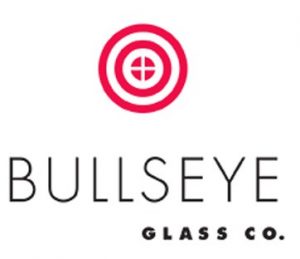Q: When I fuse my projects, sometimes I get medium to small bubbles. What causes them and how can I prevent them?
A: Bubbles can be caused by many different things. First, uneven stacking of glass can result in air trapped between layers. To prevent this from occurring, check the placement of all the glass pieces and insure they are sitting properly on the base. Since the edges of the glass fuse before the center of the glass, cut your base glass 1/8” larger than the top layer to allow air to escape. Second, check the glass prior to fusing. Some glass may already have contained bubbles inside the glass, which may or may not affect the outcome.
Q: After I fuse my pendants, I get uneven areas around the edges. What’s happening with the glass?
A: You did not fire it long enough or to a high enough temperature for a full fuse. Try firing for a little longer time.
Q: Sometimes my glass pieces look like a porcupine with spiky edges. What causes the glass to spike?
A: Spiky edges can be caused by over-firing your piece. The spiked edges are caused by the glass grabbing as it is trying to shrink.
Q: What caused my layered glass pieces to flatten?
A: If the glass piece has flattened out too much, you have over fired the piece. To prevent this from happening, reduce your power and shorten your time. After your first firing, open the microwave and using Fireworks Hot Mitts™; carefully lift the lid to inspect the fuse piece. If the desired results have not been achieved, continue firing in 30 seconds intervals.
Q: I tried to make a 1 inch pendant with embellishments, however after I finished fusing, the glass shrunk. How can I prevent this from happening the next time?
A: Glass naturally wants to be ¼ inch thick when heated. Your glass will shrink or expand to obtain this depth. A good tip to remember is that if your piece is less than ¼ inch when you start, it will shrink up to reach this depth. If your piece is larger than ¼ inch when you start, it will want to flatten out to reach this depth.
Q: What causes two pieces of dichroic or iridized glass to blow apart in the kiln?
A: Repelling glass will occur with dichroic and iridized coatings. The coatings can’t be placed together for fusing purposes, because they repel each other. The only way to avoid this is to encase the coated glass with a non-coated glass, such as clear. This will cause the coated glass to be encased and sealed.
Q: Yuck, this film appeared on my fused glass. What is it and how can I prevent this from happening?
A: This dull white crystalline substance on the surface of your glass is known as devitrification. This is one of the most talked about glass fusing problems around. It can occur when your glass remains in a temperature range 1000ºF-1300ºF too long. You need to minimize the time spent in this temperature range.
Gray or Scummy Edges - Gray or scummy edges can occur on pieces that have been fired once and then cold worked before refiring. Cold working involves using either a grinder or glass saw on a piece of glass. These can be avoided by thoroughly cleaning the glass before refiring the piece. Keep a bowl of clean water near your work area and soak the glass right after doing the cold work procedure. This will keep the edges damp and allow the piece to be cleaned easier. Scrub completely and let dry before proceeding with the refiring process.
Q: My glass cracked! What happened?
A: Cracking glass either during or after firing can be caused by a several things: thermal shock, heating up the glass too fast and compatibility.
Thermal shock occurs either by taking the piece out of the kiln too soon, or by opening the kiln and exposing the hot glass to cool air.
If the glass cracked in the kiln and it has an “S” shaped crack, the piece has heated too quickly. Slow down!
Finally, if the crack occurs along the line where the two pieces of glass meet, then the two touching pieces are not compatible. Make sure the glass you are using have the same COE (coefficient of expansion).
Q: How can I prevent my glass from shattering?
A: Glass Shattering in pieces over 1” with more than 1 layer may sometimes shatter. To prevent this from occurring, reduce the power. This will allow the glass to heat slower and will be less likely to shatter. Next, make sure your glass is clean and dry before firing.
Q: My fusing instructions say to clean my glass before firing, can I use a glass cleaning spray or detergent?
A: We don’t recommend it. Detergents, dish soaps, multi-purpose cleaners, some window cleaners, ammonia and even denatured alcohol should
NOT be used to clean glass. These can actually promote devitrification. We suggest diluted white vinegar or rinsing your glass with distilled water.
Q: Every time I put my fuse glass project together, the pieces roll off before I can get it to the microwave. What can I do to prevent this from happening?
A: To hold your fusing project together, mix one drop of glue. Apply a very thin amount on the back of the glass using a brush and allow the glue to dry
thoroughly before firing.

 Another option is to use a bottle mold. There are all types available. See the full collection here.
Another option is to use a bottle mold. There are all types available. See the full collection here.
 There are textured molds. The one above has a lovely Tree of Life motif.
There are textured molds. The one above has a lovely Tree of Life motif.
 Drop molds, such as the one above, make an interesting shape.
You also can use a textured flat mold, such as the one below, and then slump it into a bottle mold.
Drop molds, such as the one above, make an interesting shape.
You also can use a textured flat mold, such as the one below, and then slump it into a bottle mold.
 You may get devitrification with some bottles. To prevent it, spay with a divit spray like Spray A.
You may get devitrification with some bottles. To prevent it, spay with a divit spray like Spray A.

 Another option is to use a bottle mold. There are all types available. See the full collection here.
Another option is to use a bottle mold. There are all types available. See the full collection here.
 There are textured molds. The one above has a lovely Tree of Life motif.
There are textured molds. The one above has a lovely Tree of Life motif.
 Drop molds, such as the one above, make an interesting shape.
You also can use a textured flat mold, such as the one below, and then slump it into a bottle mold.
Drop molds, such as the one above, make an interesting shape.
You also can use a textured flat mold, such as the one below, and then slump it into a bottle mold.
 You may get devitrification with some bottles. To prevent it, spay with a divit spray like Spray A.
You may get devitrification with some bottles. To prevent it, spay with a divit spray like Spray A.






























